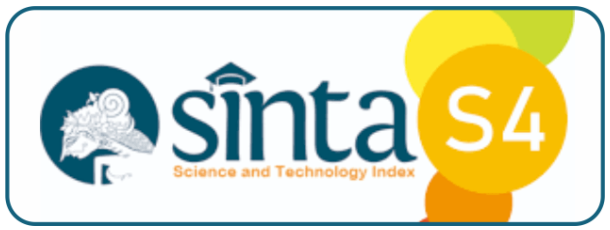Web-Based used Car Price Prediction Application with Linear Regression Method
DOI:
https://doi.org/10.32877/bt.v7i3.1722
Keywords:
Linear Regression, Price Prediction, Statistical Analysis, Used Cars, Web Application
Abstract
The rising demand in the used car market has created a need for accurate, data-driven pricing tools to benefit both buyers and sellers. This study presents a web-based application for predicting used car prices using linear regression, which enables reliable and efficient price estimation by analyzing key variables such as vehicle age, mileage, engine condition, and maintenance history. Linear regression was chosen for its statistical robustness and interpretability, allowing the model to explain 87.4% of the price variance in the dataset, as indicated by the model’s R-squared value of 0.874. The application integrates a responsive interface, making it accessible across devices and providing users with quick, real-time predictions. Through black box testing, the system was validated for accuracy, usability, and input validation, achieving a high satisfaction rate among users. Key findings highlight that the model effectively captures core variables influencing car prices, offering a streamlined tool for accurate decision-making. By simplifying price research and increasing transparency, this tool has significant implications for enhancing consumer confidence and trust within the used car industry. This research contributes a practical solution to the market, demonstrating the potential of linear regression for real-time applications in dynamic, data-driven fields. Future work will explore expanding the dataset and integrating more sophisticated models to handle complex cases, such as luxury vehicles or market shifts, further enhancing the model's reliability.
Downloads
References
X. Wang, J. Xu, W. Shi, and J. Liu, “OGRU: An Optimized Gated Recurrent Unit Neural Network,” J. Phys. Conf. Ser., vol. 1325, no. 1, pp. 1–7, 2019, doi: 10.1088/1742-6596/1325/1/012089.
B. Nuseibeh and S. Easterbrook, “Requirements engineering: A roadmap,” Proc. Conf. Futur. Softw. Eng. ICSE 2000, no. October, pp. 35–46, 2000, doi: 10.1145/336512.336523.
T. Y. Chai and I. Nizam, “MPACT OF ARTIFICIAL INTELLIGENCE IN AUTOMOTIVE INDUSTRIES TRANSFORMATION,” Int. J. Inf. Syst. Eng., vol. 9, no. 1, pp. 1–35, 2021, doi: 10.55248/gengpi.5.0524.1219.
R. W. Sebesta, Concepts of Programming Languages, 10th ed. London: Pearson, 2012.
I. Ghozali, Aplikasi Analisis Multivariate dengan Program IBM SPSS 25 edisi 9, 9th ed. Semarang: Badan Penerbit Universitas Diponegoro, 2018.
L. P. Nasyuli, I. Lubis, and A. M. Elhanafi, “Penerapan Model Machine Learning Algoritma Gradient Boosting dan Linear Regression Melakukan Prediksi Harga Kendaraan Bekas Application Of Machine Learning Models and Gradient Boosting Algorithms Doing Linear Regression Vehicle Price Prediction Used,” J. Ilmu Komput. dan Sist. Informasi(JIRSI), vol. 2, no. 2, pp. 299–310, 2023, [Online]. Available: https://jurnal.unity-academy.sch.id/index.php/jirsi/index%0Ahttp://creativecommons.org/licenses/by-sa/4.0/
R. Hu, Stock Price Prediction Based on Multiple Linear Regression Model, no. Ftbm. Atlantis Press International BV, 2023. doi: 10.2991/978-94-6463-298-9_48.
K. C. Laudon and J. P. Laudon, Manajemen Information System: Managing the Digital Firm, 13th ed. Harlow: Pearson Education Limited, 2014.
M. R. Alifi, T. Semiawan, D. C. U. Lieharyani, and H. Hayati, “Relational Data Modeling on the Document-Based NoSQL,” J. Nas. Tek. Elektro dan Teknol. Inf., vol. 11, no. 3, pp. 183–191, 2022.
J. J. M. Jimenez, S. Schwartz, R. Vingerhoeds, B. Grabot, and M. Salaün, “Towards multi-model approaches to predictive maintenance: A systematic literature survey on diagnostics and prognostics,” J. Manuf. Syst., vol. 56, pp. 539–557, 2020, doi: 10.1016/j.jmsy.2020.07.008.
D. A. N. Hutami, A. A. Nugroho, A. S. Billa, R. M. Fabian, Munawir, and M. T. D. Putra, “The Possibility Prediction of Inheriting Blood Types in Parents Based on The Child ’ s Allele Combination,” vol. 1, no. 2, pp. 21–28, 2024.
K. ’Afiifah, Z. F. Azzahra, and A. D. Anggoro, “Analisis Teknik Entity-Relationship Diagram dalam Perancangan Database Sebuah Literature Review,” INTECH, vol. 3, no. 1, pp. 8–12, Nov. 2022, doi: 10.54895/intech.v3i2.1682.
N. Amanullah, A. M. Rizki, and I. G. S. D. Mas, “Long Short Term Memory Method and Social Media Sentiment Analysis for Stock Price Prediction,” Inf. Technol. Int. J., vol. 2, no. 1, pp. 1–9, 2024.
G. Mardiatmoko, “Pentingnya Uji Asumsi Klasik Pada Analisis Regresi Linier Berganda (Studi Kasus Penyusunan Persamaan Allometrik Kenari Muda {Canarium Indicum L.]),” BAREKENG J. Ilmu Mat. dan Terap., vol. 14, no. 3, pp. 333–342, 2020, doi: 10.30598/barekengvol14iss3pp333-342.
B. Kriswantara, Kurniawati, and H. F. Pardede, “PREDIKSI HARGA MOBIL BEKAS DENGAN MACHINE LEARNING,” vol. 4, no. 1, p. 6, 2021.
A. Gupta and T. J. Nagalakshmi, “Stock Price Prediction using Linear Regression in Machine Learning,” Int. J. Innov. Technol. Explor. Eng., vol. 8, no. 12, pp. 1382–1385, 2019, doi: 10.35940/ijitee.L3932.1081219.
M. D. H. Kusuma and S. Hidayat, “Penerapan Model Regresi Linier dalam Prediksi Harga Mobil Bekas di India dan Visualisasi dengan Menggunakan Power BI,” J. Indones. Manaj. Inform. dan Komun., vol. 5, no. 2, pp. 1097–1110, 2024, doi: 10.35870/jimik.v5i2.629.
H. Alla, L. Moumoun, and Y. Balouki, “Towards Flight Delays Reduction: The Effect of Aircraft Type and Part of Day on Arrival Delays Prediction,” J. Adv. Inf. Technol., vol. 14, no. 5, pp. 980–990, 2023, doi: 10.12720/jait.14.5.980-990.
S. Muti and K. Yildiz, “Using Linear Regression For Used Car Price Prediction,” Int. J. Comput. Exp. Sci. Eng., vol. 9, no. 1, pp. 11–16, 2023, doi: 10.22399/ijcesen.1070505.
J. J. Montero Jimenez, S. Schwartz, R. Vingerhoeds, B. Grabot, and M. Salaün, Towards multi-model approaches to predictive maintenance: A systematic literature survey on diagnostics and prognostics, vol. 56. 2020. doi: 10.1016/j.jmsy.2020.07.008.
Downloads
Published
How to Cite
Issue
Section
License
Copyright (c) 2025 bit-Tech

This work is licensed under a Creative Commons Attribution-ShareAlike 4.0 International License.
I hereby assign and transfer to bit-Tech all exclusive copyright ownership rights to the above work. This includes, but is not limited to, the right to publish, republish, downgrade, distribute, transmit, sell, or use the work and other related materials worldwide, in whole, or in part, in all languages, in electronic, printed, or any other form of media, now known or hereafter developed and reserves the right to permit or license a third party to do any of the above. I understand that this exclusive right will belong to bit-Tech from the date the article is accepted for publication. I also understand that bit-Tech, as the copyright owner, has sole authority to license and permit reproduction of the article. I understand that, except for copyright, any other proprietary rights associated with the work (e.g. patents or other rights to any process or procedure) must be retained by the author. In addition, I understand that bit-Tech permits authors to use their papers in any way permitted by the applied Creative Commons license.


 DOI :
DOI :
 Abstract views: 41
/
Abstract views: 41
/  PDF downloads: 18
PDF downloads: 18











